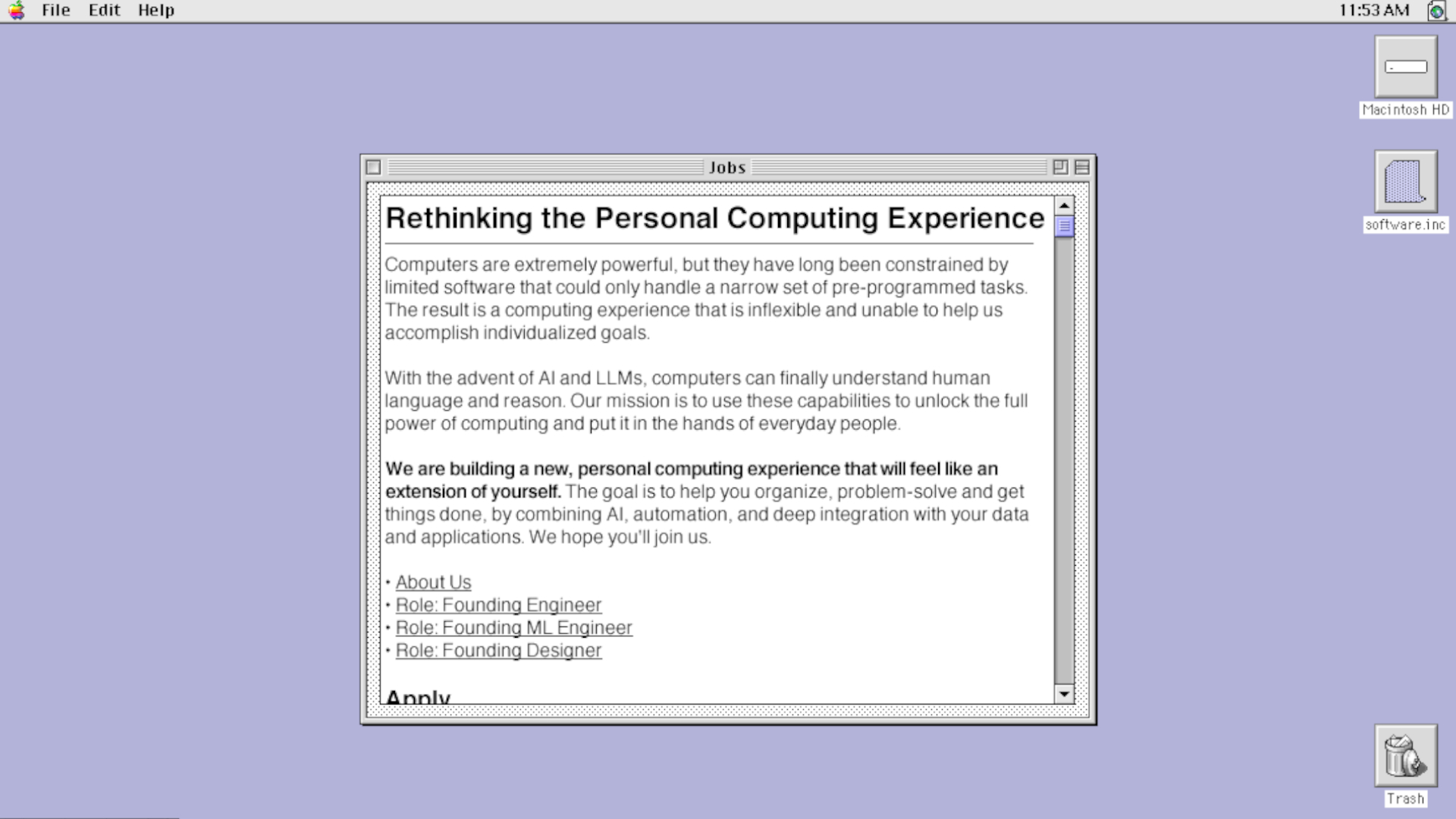Apple is cool. Cool logo. Cool products. Cool branding. It even has a cool font. What about that one exec who plays the guitar, he’s bloody cool too. And, if there’s one thing those who are “cool” are well known for, it’s showing up to a party fashionably late. However, in the case of showing up to the AI party, Apple may be arriving a little too late.
Eternal foe of the half-eaten fruit clan, Microsoft is already storming into the lead when it comes to its adoption of AI with services like Bing Chat and Copilot — having cleverly gotten into the chatbot arms race early by investing heavily to get its feet under the table at ChatGPT startup OpenAI.
So far under the table, that you’d presume its boardroom is now carpeted by the iconic rolling green hills and blue sky of a certain Windows XP wallpaper. It probably looks quite fetching when paired with the shrine to AGI (Artificial General Intelligence) that its former Chief Scientist was rumored to worship feverishly at the foot of.
Even Google is pulling ahead of Apple, having developed everyone’s favorite robotic imbecile, Bard. Google’s chatbot is homegrown and soon to be powered by a state-of-the-art large language multimodal AI called Gemini.
Which, we’re told, is so good that we absolutely shouldn’t harp on about the fact that Google recently overstated its capabilities to audiences the world over after publishing a heavily misleading and craftily edited hands-on demonstration. One that was neither hands-on nor demonstrative of the software’s actual capabilities. Oops.
Apple’s missed opportunit-AIs
Even with their faults, Microsoft and Google’s AI ventures are at least in a constant state of improvement from real-time testing and feedback. By the time Tim Cook kickstarts the repurposed Apple Reality Distortion Field™ and takes to the stage to reveal his all-new, unprecedented, never-before-possible AI update to Siri, there’s a chance we’ll all have long moved on from simple generative back-and-forths.
Instead, we’ll be busy living out our Blade Runner 2049 fantasies as we fish mouth and French kiss open-air spaces, Autofilled by our Adobe Photoshop irises to include the visage of our virtual partners, generated entirely from our wildest desires — which will be effortlessly mined from the inside of our very skulls by Elon Musk’s mind control device perfectly-safe-and-harmless-to-lab-test-on-monkeys* brain-computer interface, Neuralink.
Of course, all of that could be seen as grossly hyperbolic and borderline offensively speculative. But if the multiverse theory is true (and I’ve seen enough Marvel movies to now convince me it is) then you’ll also know that in an infinite multiverse, everything I just wrote is guaranteed to be true — it’s just a matter of where and when.
So why not here and in our near future? After all, there are several big ways that Apple has already lost out with its fashionably late approach to AI as employees have abandoned ship to chase the pot of gold at the end of the AI rainbow. And they’ve been taking some top ideas with them.

Humane AI Pin
Humane’s AI Pin is a Star Trek communicator-like smart badge that boldly goes where no brand has gone before. It’s exactly the kind of thing you can imagine coming out of Apple Park, and it sort of is. Humane was founded by former Apple employees Imran Chaudhri and Bethany Bongiorno and offers an entirely new way of interacting with your tech with a healthy dose of AI to refine the experience even further.
The AI Pin is outfitted with a laser ink display that projects a simple UI onto the palm of your hand which you can interact with using simple hand gestures. This means controlling your Pin with a tilt and roll of your hand to highlight different options and making selections by closing your fingers like you’re about to enter a state of Zen meditation. Through this interface, you’ll be able to quickly control your music or read messages on the go without reaching into a pocket to pull out your smartphone.
You can also interact with the AI Pin using its touchpad to make use of the onboard multimodal AI through speech. Here you can converse with the onboard AI and ask it questions, set reminders, compose messages, or even ask it to look at what’s in front of you using the Pin’s 13MP camera to give you more information about a location or answer specific questions about particular items with more context.
Beyond the Vision Pro, this type of product is genuinely something Apple could have used to bring about that post-iPhone era we’re all hearing so much about and seeing little evidence of.

A true desktop AI experience
Another promising venture spearheaded by former Apple employees comes from Software Applications Incorporated, which recently raised $6.5 million in funding to pursue its goal of bringing generative AI to the desktop experience.
Speaking with The Verge, SAI stated it wanted to do more with AI, something that “pushes operating systems forward” while recreating “the magic that you felt when you used computers in the ‘80s and ‘90s.” Thankfully, they don’t mean bringing back the command prompt, but what they do mean is bringing back the freedom of having a machine that could pretty much do as you told it to.
AI, being quite good at doing what you tell it to, sounds like the ideal solution, and SAI is currently in the prototyping phase of figuring out exactly how. Although it would seem that cross-application interactivity is a key component, with its AI having the freedom to truly interact with your operating system by taking actual proactive steps on your behalf in pursuit of completing a task. By all accounts, it sounds like they’re making a version of Copilot for Windows that isn’t mostly trash.
Outlook
It’ll be incredibly awkward if Apple tries to wow us with Siri getting a been-there-done-that, generative AI treatment after the company waited too long for the opportune moment to breach the market. It’ll be much harder, having stalled and delayed while waiting for a technology in a constant state of flux and evolution to mature, to convince consumers that they had it in the bag all along.
Especially if, as Apple tends to do, they claim such technology was just too powerful to be realized until they could launch the iPhone 18. Which, with stretched resources, could be a smartphone that still looks relatively identical to the iPhone 11 but now includes a magical MacGuffin to make it uniquely proficient at doing almost everything ChatGPT managed to do three years prior.
Apple’s big mistake with its AI goals could have been to view it as a product or service launch like any other. Apple is a big fan of letting others go first, only to swoop in and steal the spotlight once it knows there’s an audience primed and ready to be wowed. It’s worked pretty well for Apple in the past, but the pace at which AI is growing and developing could leave the brand perpetually playing catchup, as those who got in the game early continue to advance.
Source link
 notebook.co.id informasi dan review notebook laptop tablet dan pc
notebook.co.id informasi dan review notebook laptop tablet dan pc